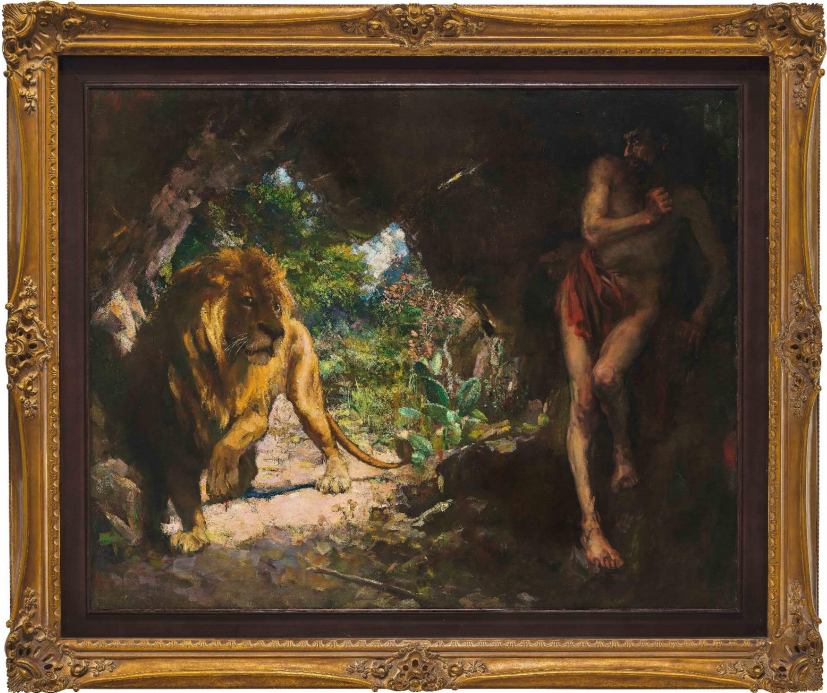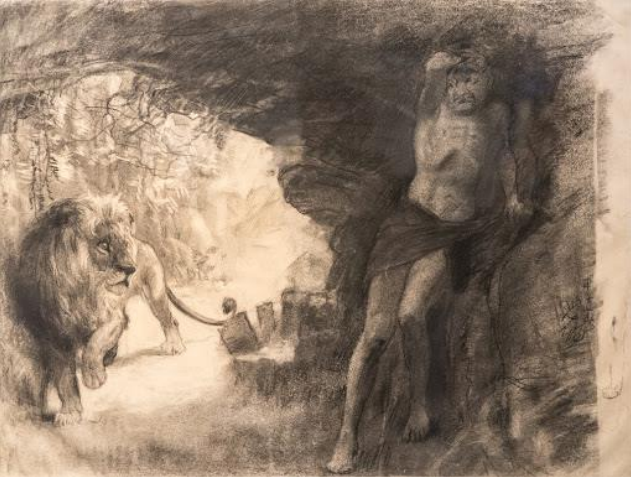Christie’s Proudly Presents Slave and Lion by Xu Beihong A Remarkable Treasure of National History The Highest-Estimated Asian Artwork Ever Offered at Auction
Hong Kong - Christie’s is proud to offer Slave and Lion, a magnificent national treasure of museum quality, by Chinese Modern master Xu Beihong (1895-1953). As one of the most influential artists of the 20th Century, he paved the way for Chinese Realism and pioneered modern art education in China. The work carries an estimate of HK$350.000.000 – 450.000.000/ US$45.000.000 – 58.000.000. the highest estimated Asian artwork ever offered at auction. Following the previous world records set by Christie’s for Su Shi’s Wood and Rock and Sanyu’s Five Nudes, the sale is an ongoing testament to Christie’s ability in sourcing the most important Asian Art masterpieces. The painting is a ground-breaking example of the artist’s thematic creations, and signifies a watershed moment in modern Chinese art history. In order to underscore the historical significance and influence of this work, Slave and Lion will be presented in an exclusive single-lot evening sale, immediately after the conclusion of the 20th and 21st Century Art Evening Sale in Hong Kong.

Slave and Lion
signed and dated in Chinese (lower left) oil on canvas
123.3 x 152.8 cm. (48 1/2 x 60 1/4 in.)
Painted in 1924
Francis Belin, President, Asia Pacific, commented “We are privileged to be offering this exceedingly rare work which holds great cultural significance. The sale of this museum-quality masterpiece marks a monumental moment in auction history and continues Christie’s tradition in offering the greatest masterworks of Chinese Modern art. As the leading highlight of our Spring season, it joins a formidable line-up of Asian and Western masterpieces, sourced by the strength and unparallel expertise of our market-leading team here in Asia”.
A National Treasure: Xu Beihong is one of the most important artists of Chinese Realism, and the founder of modern art education in China. Slave and Lion was painted at the height of his creative output, and is regarded as one of his most significant and signature creations. It marks a crucial milestone and is widely considered one of the most important oil paintings in Chinese art history. It was previously sold at Christie’s Hong Kong in 2006 for HK$53.880.000. a record at the time for a Chinese oil painting.

painted in 1924. 47.5 x 63 cm.
Xu Beihong Memorial Museum
A Groundbreaking Work of Xu Beihong’s Thematic Paintings: Slave and Lion (1924) is the first thematic work in Xu’s oeuvre. Later creations such as Tian Heng and His Five Hundred Followers (1928-1930), Behind Me (1931-1933), Yugong Yishan (1940) are all inspired by the pioneering nature of Slave and lion, and collectively blazed the trail of revolution and innovation in modern Chinese art, reinforcing the tremendous historical value of this work.
Xu Beihong's Largest Oil Painting Still in Private Hands: The artist's thematic oil paintings are extremely rare on the market and no more than six have ever appeared in history.
In Praise of Humanity and Compassion: The story behind Slave and Lion originates from ancient Roman mythology and Aesop's Fables - the slave who tried to run away was captured by his master, and thrown into the Colosseum to be executed by the lion. However, to everyone's surprise, the lion recognised the slave and did not attack him. It transpired that the slave had removed a thorn stuck in the lion's paw during transportation. The moving account paved way for the slave and lion to be set free. The story serves to praise the essence of humanity and our intrinsic nature towards compassion and redemption for all.
Patriotism and Revival of the Chinese Nation: The lion in the painting is wounded and in need of help, yet remains dignified, righteous and proud - a symbol of the Chinese people's spirit. The slave stands fearless in the face of danger, a display of defiance and vigour, he is a an emblem of the nation. In this masterwork, Xu Beihong elevates the simple allegoric tale about repaying kindness to a portrayal of national strength, resilience and fortitude, uplifting the country's spirits with the hopes of reviving the nation.
Spirit of the Lion: Xu Beihong frequently uses the lion to exemplify his faith in the nation's rise. A ferocious creature with a calm character, and is hence regarded as the 'King of all Animals.' The artist has created dozens of majestic paintings depicting the lion throughout his life, including important works such as Lion’s Roar, Wounded Lion (1938), Join Forces in Tokyo (1943) and more.
Renowned Provenance: The study on paper of this painting is from the same year and now resides in the Xu Beihong Memorial Museum in Beijing. The painting has been featured in numerous important publications: Xu Beihong: A Master of Chinese Art (Xu Beihong Memorial Museum, Beijing); Xu Beihong in Nanyang (Singapore Art Museum); It was also included in the landmark exhibition of 【Xu Beihong in Nanyang 】in Singapore Art Museum.




